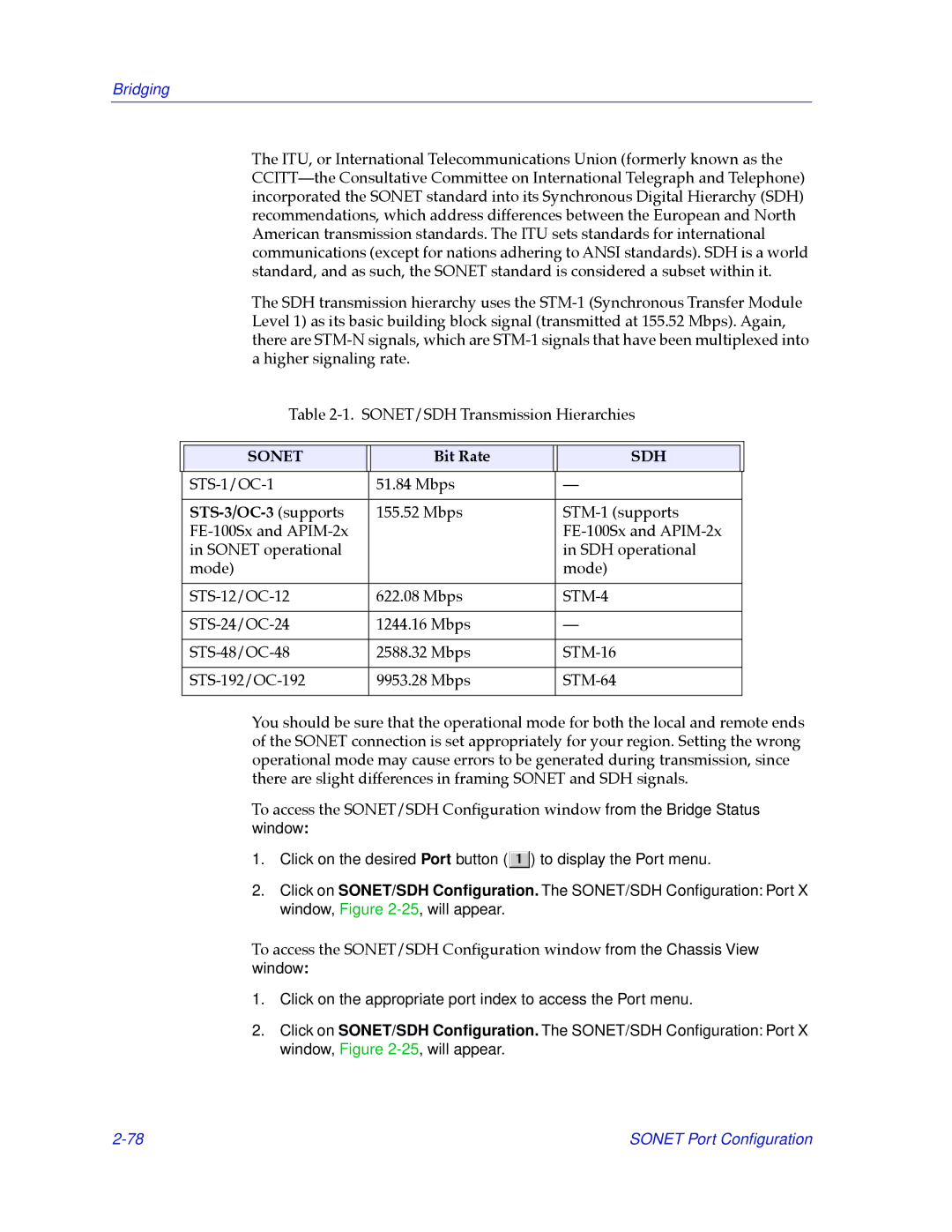
Bridging
The ITU, or International Telecommunications Union (formerly known as the CCITTÑthe Consultative Committee on International Telegraph and Telephone) incorporated the SONET standard into its Synchronous Digital Hierarchy (SDH) recommendations, which address differences between the European and North American transmission standards. The ITU sets standards for international communications (except for nations adhering to ANSI standards). SDH is a world standard, and as such, the SONET standard is considered a subset within it.
The SDH transmission hierarchy uses the
Table
SONET
Bit Rate
SDH
| 51.84 Mbps | Ñ | |
|
|
|
|
|
| 155.52 Mbps | |
|
| ||
| in SONET operational |
| in SDH operational |
| mode) |
| mode) |
|
|
|
|
| 622.08 Mbps |
| |
|
|
|
|
| 1244.16 Mbps | Ñ | |
|
|
|
|
| 2588.32 Mbps | ||
|
|
|
|
| 9953.28 Mbps | ||
|
|
|
|
You should be sure that the operational mode for both the local and remote ends of the SONET connection is set appropriately for your region. Setting the wrong operational mode may cause errors to be generated during transmission, since there are slight differences in framing SONET and SDH signals.
To access the SONET/SDH ConÞguration window from the Bridge Status
window:
1.Click on the desired Port button (![]() ) to display the Port menu.
) to display the Port menu.
2.Click on SONET/SDH Configuration. The SONET/SDH Configuration: Port X window, Figure
To access the SONET/SDH ConÞguration window from the Chassis View window:
1.Click on the appropriate port index to access the Port menu.
2.Click on SONET/SDH Configuration. The SONET/SDH Configuration: Port X window, Figure
SONET Port Configuration |
